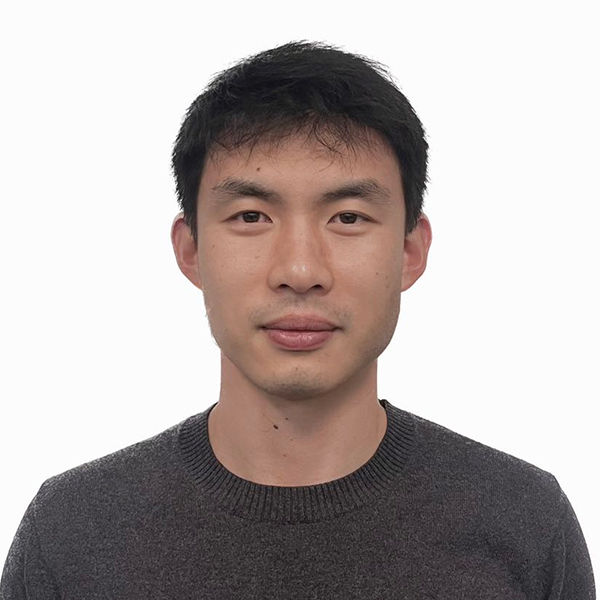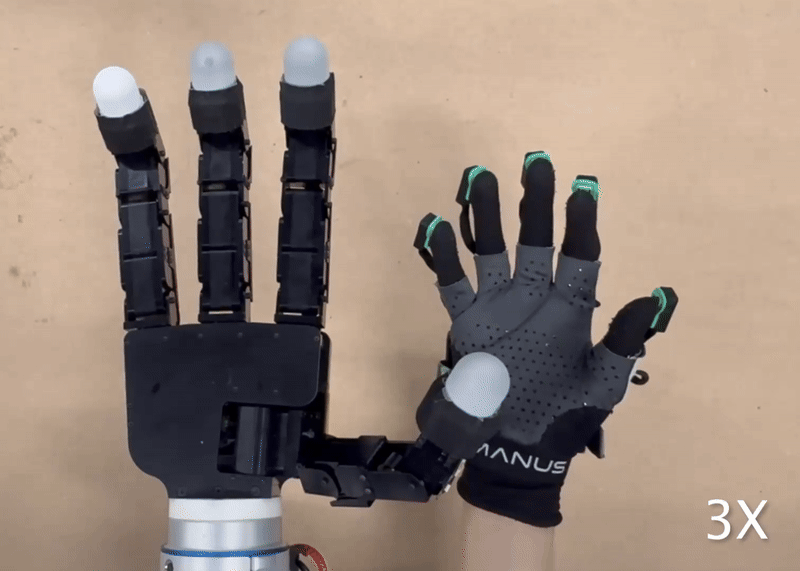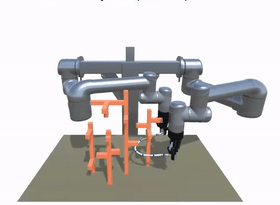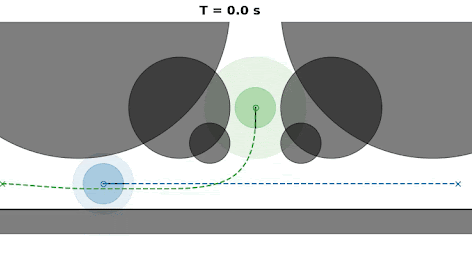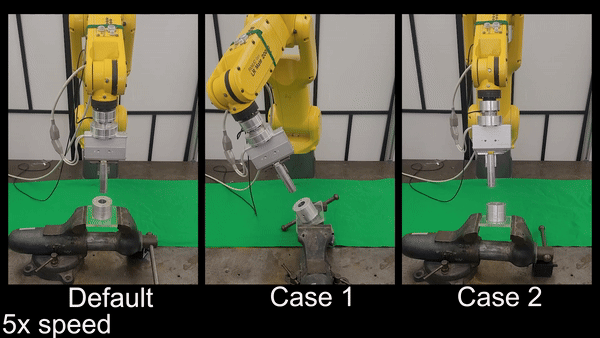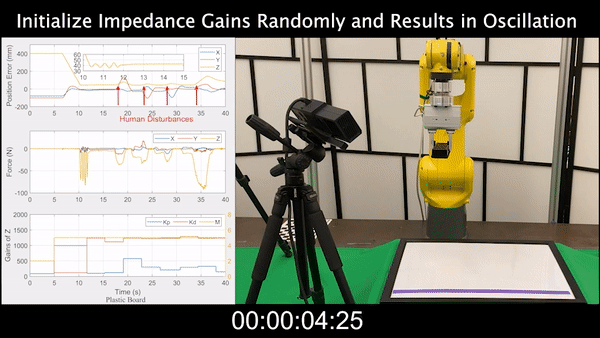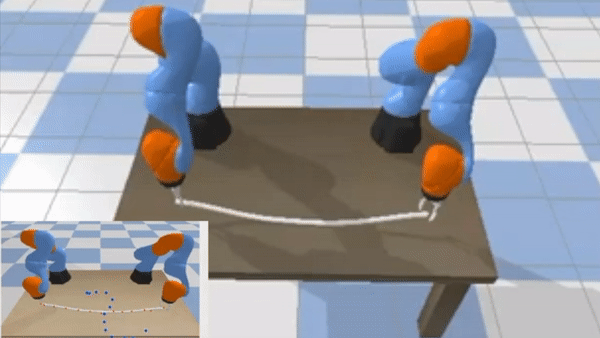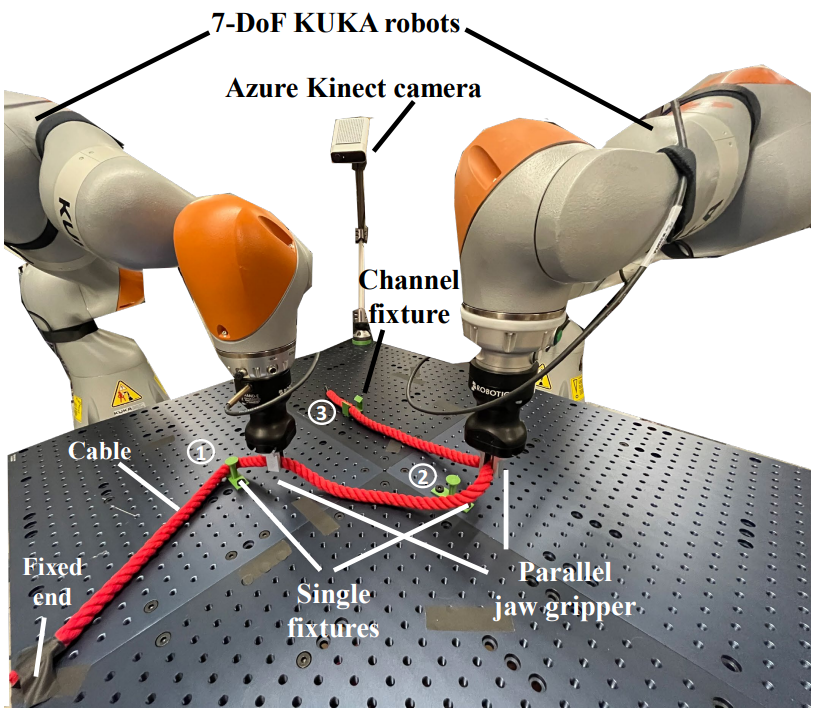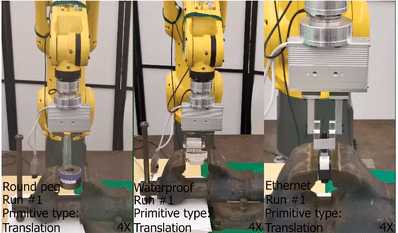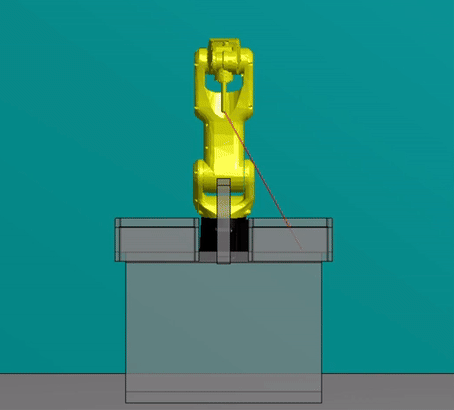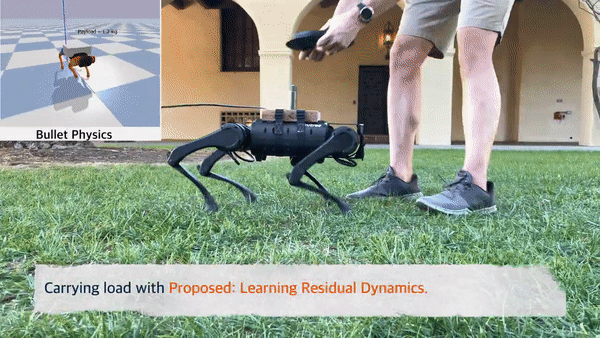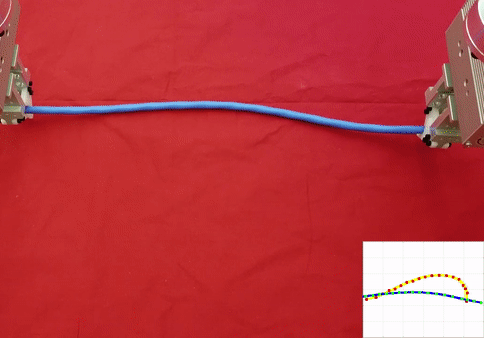I’m a researcher at Meta Fundamental AI Research (FAIR) in Menlo Park, where I focus on robotic manipulation.
I completed my Ph.D. at UC Berkeley in December 2023, advised by Prof. Masayoshi Tomizuka. During my Ph.D. studies, I interned with Google’s Everyday Robots project in the summers of 2020 and 2022.
News
- 06/2025: Paper: Geometric Retargeting: A Principled, Ultrafast Neural Hand Retargeting Algorithm accepted by IROS 2025
- 04/2025: Paper: DexterityGen: Foundation Controller for Unprecedented Dexterity accepted by Robotics: Science and Systems (RSS) 2025.
- 07/2024: Paper: Generalizable whole-body global manipulation of deformable linear objects by dual-arm robot in 3-D constrained environments accepted by International Journal of Robotics Research (IJRR).
- 06/2024: Paper: In-Hand Following of Deformable Linear Objects Using Dexterous Fingers with Tactile Sensing accepted by IROS 2024.
- 01/2024: Paper: Distributed Multi-agent Interaction Generation with Imagined Potential Games accepted by American Control Conference (ACC) 2024.
- 12/2023: I defended my Ph.D. dissertation. Here is my thesis.
- 12/2023: Paper: Robot manipulation task learning by leveraging se (3) group invariance and equivariance accpeted by IEEE Robotics and Automation Letters (RA-L).
- 09/2023: Paper: Efficient Sim-to-real Transfer of Contact-Rich Manipulation Skills with Online Admittance Residual Learning (website) accepted by CoRL 2023.
- 06/2023: Paper: A coarse-to-fine framework for dual-arm manipulation of deformable linear objects with whole-body obstacle avoidance (video) won the Best Paper Award at the ICRA 2023 Workshop on Representing and Manipulating Deformable Objects.
show more
- 01/2023: Paper: A coarse-to-fine framework for dual-arm manipulation of deformable linear objects with whole-body obstacle avoidance accepted by ICRA 2023.
- 01/2023: Paper: Zero-Shot Policy Transfer with Disentangled Task Representation of Meta-Reinforcement Learning accepted by ICRA 2023.
- 05/2022: Paper: Safe Online Gain Optimization for Cartesian Space Variable Impedance Control accepted by CASE 2022
- 02/2022 Paper: Offline-Online Learning of Deformation Model for Cable Manipulation With Graph Neural Networks accepted by IEEE Robotics and Automation Letters (RA-L).
- 02/2022: Paper: Robotic cable routing with spatial representation accepted by IEEE Robotics and Automation Letters (RA-L).
- 01/2022: Paper: Learning Insertion Primitives with Discrete-Continuous Hybrid Action Space for Robotic Assembly Tasks accepted by ICRA 2022
- 01/2022: Paper: BPOMP: A Bilevel Path Optimization Formulation for Motion Planning accepted by ACC 2022
- 06/2021: Paper: Trajectory Splitting: A Distributed Formulation for Collision Avoiding Trajectory Optimization accepted by IROS 2021.
- 06/2021: Paper: Online Learning of Unknown Dynamics for Model-Based Controllers in Legged Locomotion accepted by IEEE Robotics and Automation Letters (RA-L).
- 01/2021: Paper: Contact Pose Identification for Peg-in-hole Assembly under Uncertainties accepted by ACC 2020.
- 06/2019: Paper: Robust Deformation Model Approximation for Robotic Cable Manipulation accepted by IROS 2019.
- 07/2018: Paper: A Framework for Manipulating Deformable Linear Objects by Coherent Point Drift accepted by IEEE Robotics and Automation Letters (RA-L).
Research
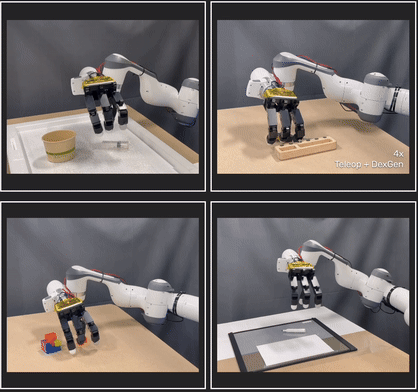
DexterityGen: Foundation Controller for Unprecedented Dexterity
Zhao-Heng Yin, Changhao Wang, Luis Pineda, Francois Hogan, Krishna Bodduluri, Akash Sharma, Patrick Lancaster, Ishita Prasad, Mrinal Kalakrishnan, Jitendra Malik, Mike Lambeta, Tingfan Wu, Pieter Abbeel, and Mustafa Mukadam
Robotics: Science and Systems (RSS) 2025
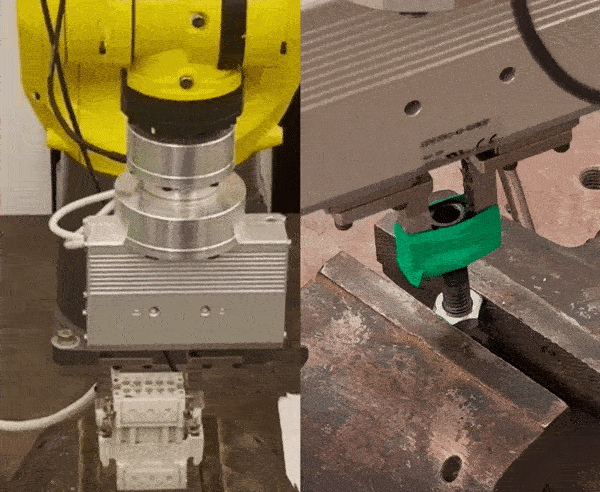
Efficient Sim-to-real Transfer of Contact-Rich Manipulation Skills with Online Admittance Residual Learning
Xiang Zhang*, Changhao Wang*, Lingfeng Sun, Zheng Wu, Xinghao Zhu, Masayoshi Tomizuka
Conference on Robot Learning (CoRL) 2023
[Paper] [Website] [Simulation Code]
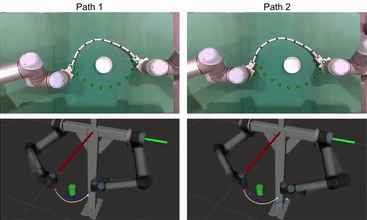
A coarse-to-fine framework for dual-arm manipulation of deformable linear objects with whole-body obstacle avoidance
Mingrui Yu, Kangchen Lv, Changhao Wang, Masayoshi Tomizuka, Xiang Li
ICRA 2023
⭐ Best Workshop Paper Award ⭐
[Paper] [Website] [Presentation]
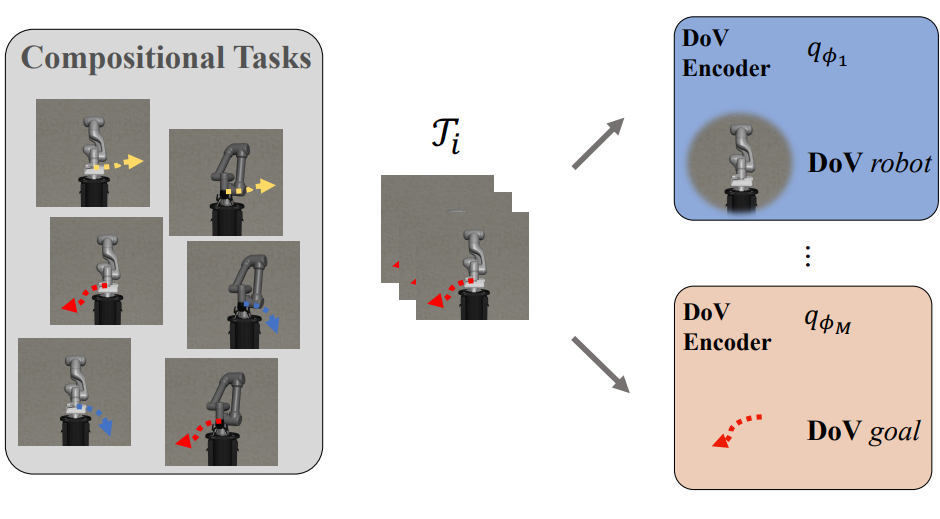
Zero-Shot Policy Transfer with Disentangled Task Representation of Meta-Reinforcement Learning
Zheng Wu, Yichen Xie, Wenzhao Lian, Changhao Wang, Yanjiang Guo, Jianyu Chen, Stefan Schaal, Masayoshi Tomizuka
ICRA 2023
[Paper]

Prim-LAfD: A Framework to Learn and Adapt Primitive-Based Skills from Demonstrations for Insertion Tasks
Zheng Wu, Wenzhao Lian, Changhao Wang, Mengxi Li, Stefan Schaal, Masayoshi Tomizuka
IFAC 2023
[Paper]
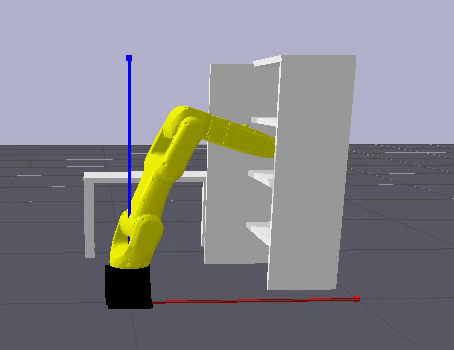
Trajectory splitting: A distributed formulation for collision avoiding trajectory optimization
Changhao Wang, Jeffrey Bingham, Masayoshi Tomizuka
IROS 2021
[Paper]
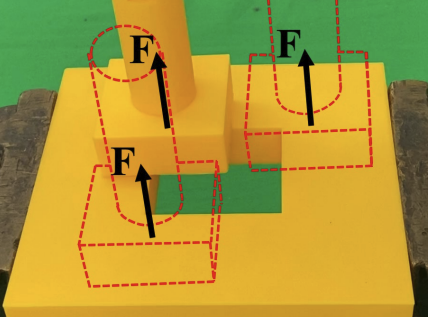
Contact pose identification for peg-in-hole assembly under uncertainties
Shiyu Jin, Xinghao Zhu, Changhao Wang, Masayoshi Tomizuka
American Control Conference (ACC) 2021
[Paper]
A framework for manipulating deformable linear objects by coherent point drift
Te Tang*, Changhao Wang*, Masayoshi Tomizuka
IEEE Robotics and Automation Letters (RA-L) 2018
[Paper]
